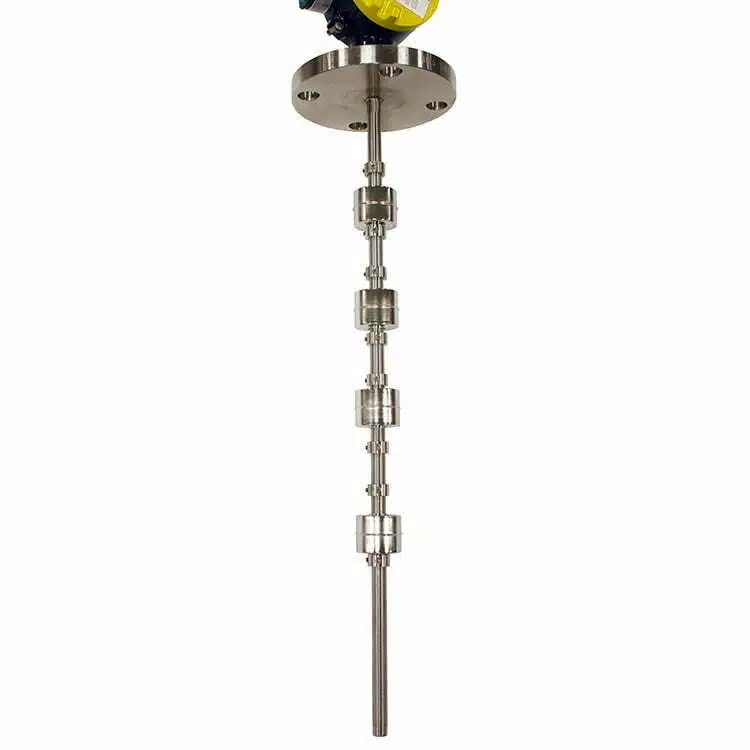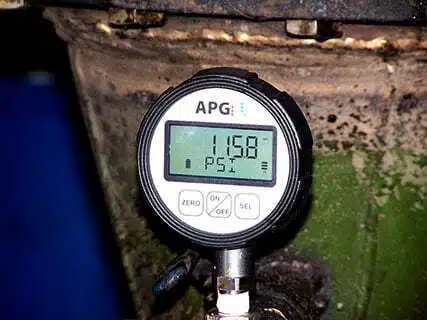

A field calibration is a quick way to get your digital pressure gauge back in spec, and works great for fixing minor drift, installation shift, barometric pressure changes (for sealed units), or other minor discrepancies.
There are 3 ways to perform a field calibration on our digital pressure gauges:
The Tare function is meant to ignore the existing pressure, or load, to measure a change of pressure. It does this by moving the reference point from the original zero to the current pressure.
Tare is a common term in weight measurement. For example, you would tare out the weight of a container in order to measure added weight inside the container.
The same concept works for zero adjustments. If your APG digital pressure gauge is reading something other than zero when fully depressurized, you could enable Tare to change the reference, or zero, point.
Using Tare to zero your gauge is a great way to deal with barometric changes that affect sealed digital pressure gauges. As the zero reference will not automatically compensate for barometric pressure, you can Tare the gauge periodically to keep your measurements accurate.
While this approach works, it’s not a permanent fix. Consider it a useful hack, perfect for minor zero adjustments when calibrating your digital pressure gauge.
While the Tare function allows you to adjust the zero, Range Adjust let’s you move the span, or full scale. For example, if you have one of our 0-500 psi digital pressure gauges, and it reads 500 psi when you know it’s only 490 psi, you can fix it with Range Adjust.
To use Range Adjust, you have to pressure up the gauge to its full scale using a known pressure source, such as from a deadweight tester, a pressure comparator, or a pressure controller. Once the gauge is fully pressurized, you’ll reset the full scale using the Range Adjust setting.
You can only adjust the full scale 5% up or down. So on a 500 psi gauge, you can only move the full scale 25 psi one way or the other. If the digital gauge needs to be adjusted more, use the Quick Cal feature.
When you need to reset both end points – the zero and span – use the Quick Cal feature for fast and easy gauge calculation. This is the most comprehensive of the three methods for field calibration, and will likely give you the best results. Like Range Adjust, Quick Cal requires a known pressure source, but will set both the zero and span and is not subject to a 5% change limit.
Again, while this is a calibration, it’s not as thorough as a factory calibration and should not be seen as a replacement. However, it can buy you some time if your digital pressure gauge has drifted, or if you need to move the pressure gauge to a new location.
Installation shift is a good example of a situation that would require a Quick Cal. Installation shift happens when a gauge is over-torqued and the diaphragm compressed during installation. It’s an installation error to which any digital pressure gauge would be vulnerable.
A slightly compressed diaphragm will likely still work, but will behave differently than an undamaged sensor, and needs to be calibrated. In this scenario, the Quick Cal is enough to overcome this one-time shift, and could be repeated if the installation error resulted in a period of accelerated drift.
These shift and drift problems, without the Quick Cal feature, would require you immediately send the gauge back to the factory for a full recalibration. With the Quick Cal function, you can fix an installation error in the field and return the gauge to service.
You can also increase the digital pressure gauge’s longevity as you continually keep the gauge well within spec over the course of its operational life. Together with annual factory calibrations, your APG digital pressure gauge can perform accurately in a variety of applications for many years.
Contact us if you have any questions about digital pressure gauges, calibration, or NIST certificates.